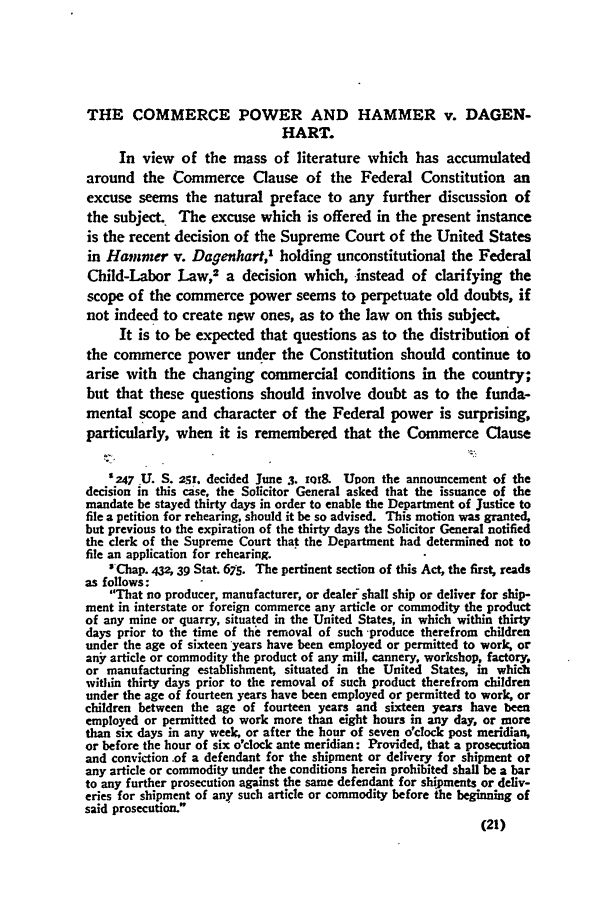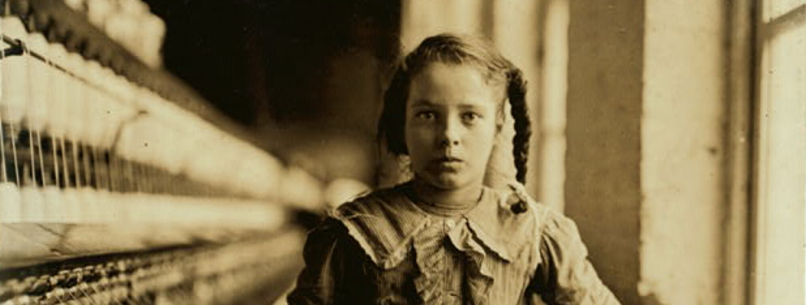The Keatings Owens Act was later deemed "unconstitutional" in Hammer v. Dagenhart, 1918 because production was not commerce. Dagenhart, North Carolina cotton mill worker with his two sons, claimed that Congress violated his sons' freedom to work. The Supreme Court left no room for federal regulation.

Hammer v. Dagenhart, 1918, U.S. Supreme Court.
